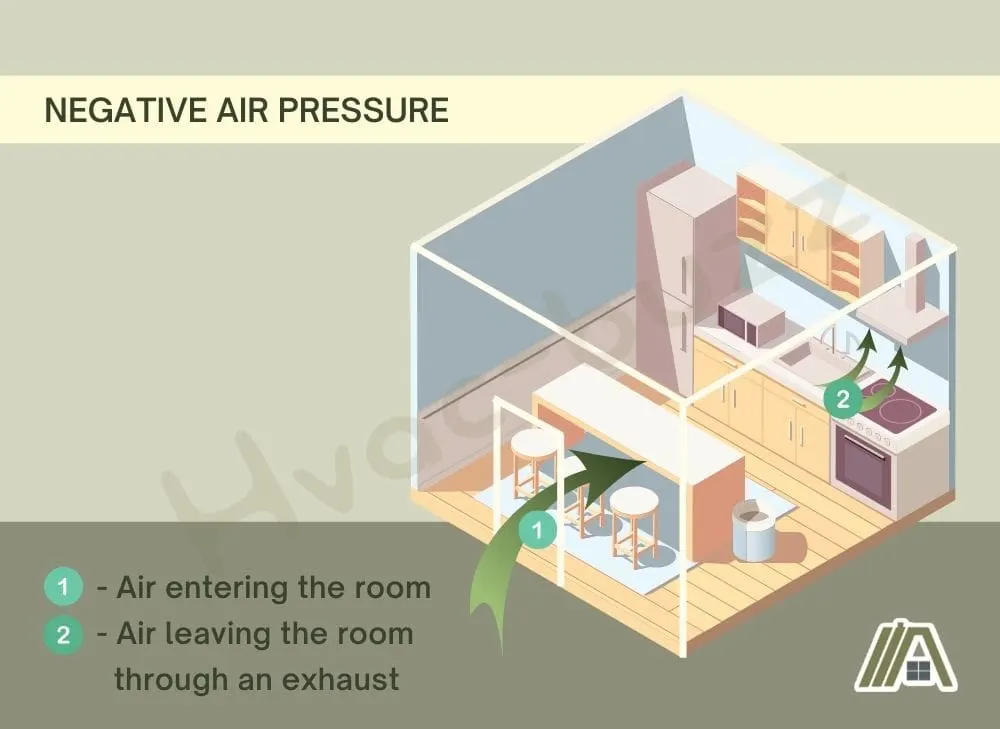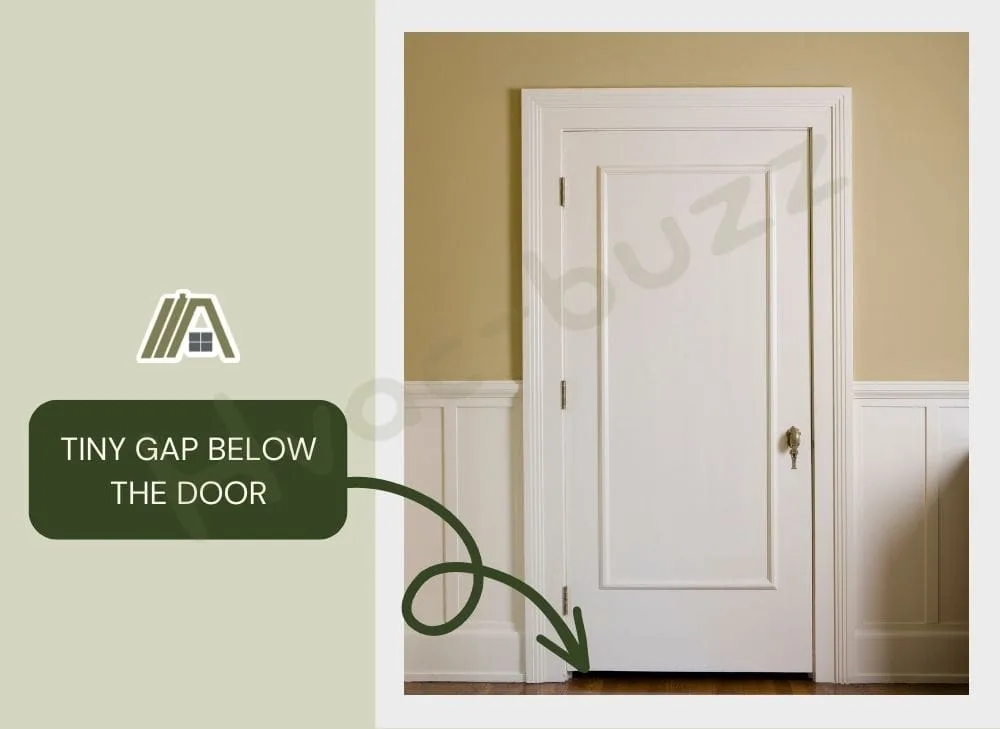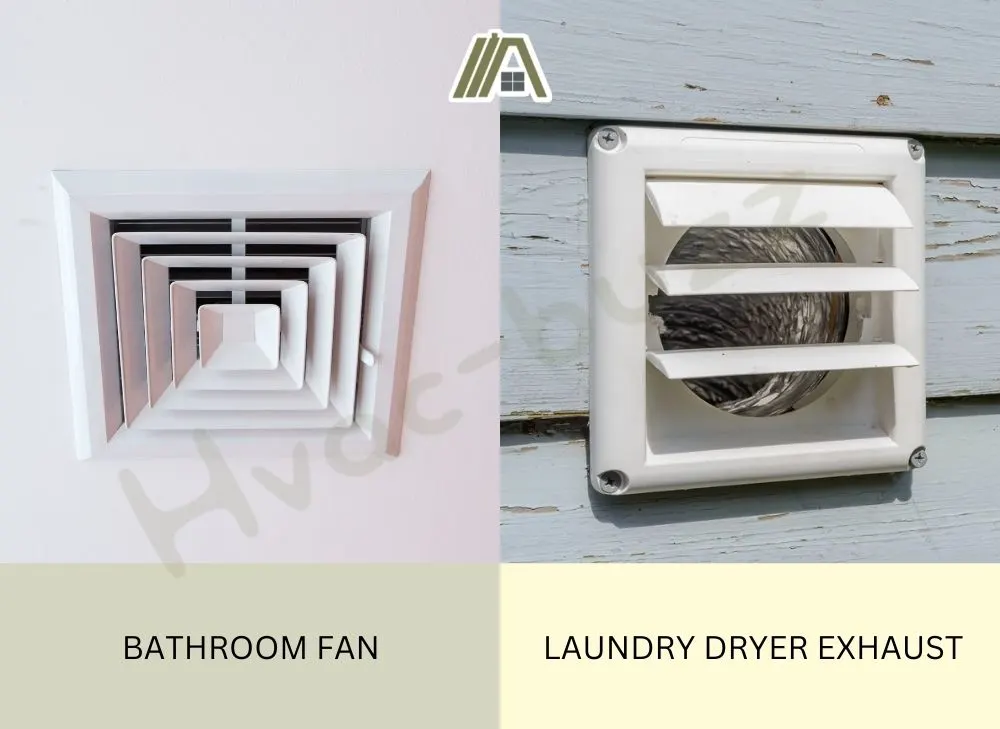Cutting corners can be helpful sometimes, both for your wallet and for lessening the number of maintenance tasks you have to keep up with. Makeup air is not something that is commonly talked about, so it makes sense to wonder if it’s really a necessity.
Really, whether you need it or not depends on your specific home setup. Let’s take a look at what exactly happens without it, so you can make an informed decision.

Makeup air is necessary to prevent negative pressure systems. These prevent air from being exhausted, draw air in through cracks, and pull smelly air from drains. It can also affect the supply of combustion air for gas-powered appliances.
Makeup Air Prevents Negative Pressure Systems
What goes up must come back down—or, in the case of makeup air, whatever leaves, must come back in.
Whenever the vents in your home (kitchen, bathroom, etc.) remove air from the inside of your home, then your indoor space becomes an area with negative pressure.
This can be a problem for multiple reasons, which we’ll discuss in a moment.
Before we get into that, however, you should be aware that makeup air units prevent all these negative effects by quickly and safely pulling air into the home from outdoors to replace this exhausted air (although they must be far enough away from the exhaust vents to be effective and safe).
Results of Negative Pressure Indoors
Exhaust Systems Become Ineffective
When a space with negative pressure exists, it works as a vacuum and pulls air into itself. If your home has negative pressure, then it, too, will function as a vacuum.

Up to a certain extent, this action is part of the exhaust system. The removed air is replaced with air from other rooms or by pulling air in from outside through cracks, gaps, or open windows.
However, once a certain amount of air gets exhausted at a time, the negative pressure system cannot be balanced out—or, at least, not soon enough to prevent issues.
For starters, if your home is trying to pull air into itself, then it becomes harder for air to continue being vented outwards, making your exhaust systems ineffective.
This will result in your ventilation system—let’s say, your kitchen range hood—having to work overtime in order to try to continue doing its job of venting air outwards. This can cause the hood to overheat and/or fail to remove excess odor, steam, and smoke while you are cooking.
Over time, this will also lead to grease building up around your kitchen faster—meaning more cleaning!
Your kitchen range hood isn’t the only ventilation system that could be prone to overheating. Your dryer may also struggle to vent hot air when located in a room with negative pressure and may overheat as a result.
In an area like your bathroom, negative pressure might mean that extremely humid air gets stuck inside the room. If this is not resolved, then over time the humid bathroom air can cause moisture damage like wood rot, mildew, or mold.
Essentially, any ventilation system in your home can suffer from a lack of adequate makeup air.
Unconditioned Air Pulled Through Gaps
If you don’t have makeup air, then air will still find its way into your home in any way it can. This air will be unconditioned, it will balance out the pressure far slower, and it will come from undesirable spaces.
By “undesirable spaces,” I mean that air will be pulled in from any crack in your home, like tiny gaps around your door frames and window frames.

While this may be okay on a small scale, when you get the place of needing makeup air, we’re talking about some serious drafts.
Drafts are particularly unpleasant in the winter and they force your HVAC system to work harder to temper this incoming air.
Air can also backdraft, or pull in from places it should be venting out, like your chimney, vents, or furnace.
This can actually be quite dangerous as backdrafting can pull carbon monoxide into your home when it is meant to be removed.
Smelly Air Pulled From Drains
Beyond draftiness and the potential dangers of carbon monoxide, you may also have to endure an unpleasant odor thanks to negative pressure.
This is because air can be pulled in from your drains (toilets, sinks, showers, washers, etc.). That means that air that is scented by bacteria, gas, food, and whatever else may exist in your plumbing will be filling your home.
Needless to say, drain smells are not fun to deal with, and neither are any of the other issues that come with negative pressure inside the home.
If the buildup of negative pressure in any part of your house causes any of the above issues, you may want to consider taking a look at makeup air units.
Gas-Powered Appliances Lose Combustion Air
While makeup air is not provided for gas-powered appliances, they are provided with combustion air, which is necessary for safe and effective function.
Negative pressure systems could interfere with the provision of combustion air as it pulls it in for general use as opposed to combustion use.
Not All Exhaust Systems Require Makeup Air
All this being said, it isn’t always necessary to have a makeup air unit. Often, its necessity is dependent on the CFM, or cubic feet per minute, of an exhaust system.
According to Section M1503.6 of the IRC, a makeup air system that is able to provide air at a rate relatively equal to the air that is vented out must be installed if the exhaust system of a kitchen containing a fuel-burning (gas, liquid, or solid) appliance is capable of moving 400 CFM or more per minute.
The only exception to this is if the exhaust system is intended for cooling and will be operated only when a window or other air intake is opened.
Of course, although not necessarily required by code, it would not be uncommon to find makeup air units installed in the kitchen, especially if the kitchen is small and/or the range hood has a higher CFM.
Bathroom fans and laundry dryers, however, usually have a much lower CFM and are unlikely to break 400 CFM.

However, dryers have a different set of rules. If they exceed 200 CFM, then makeup air is necessary.
In addition, any exhaust system that interferes with the function of a gas-powered appliance needs to be provided with makeup air.
Unless you notice symptoms of negative pressure in your bathroom, you are unlikely to need to look into providing makeup air for it.
Sources
https://hauslane.com/blogs/news/what-is-makeup-air-do-i-need-it
https://kitchenambition.com/make-up-air-for-range-hood/
https://reliablewater247.com/importance-of-make-up-air/
https://www.hoodfilters.com/foodservice-blog/2017/06/23/need-make-air-supply-unit/
